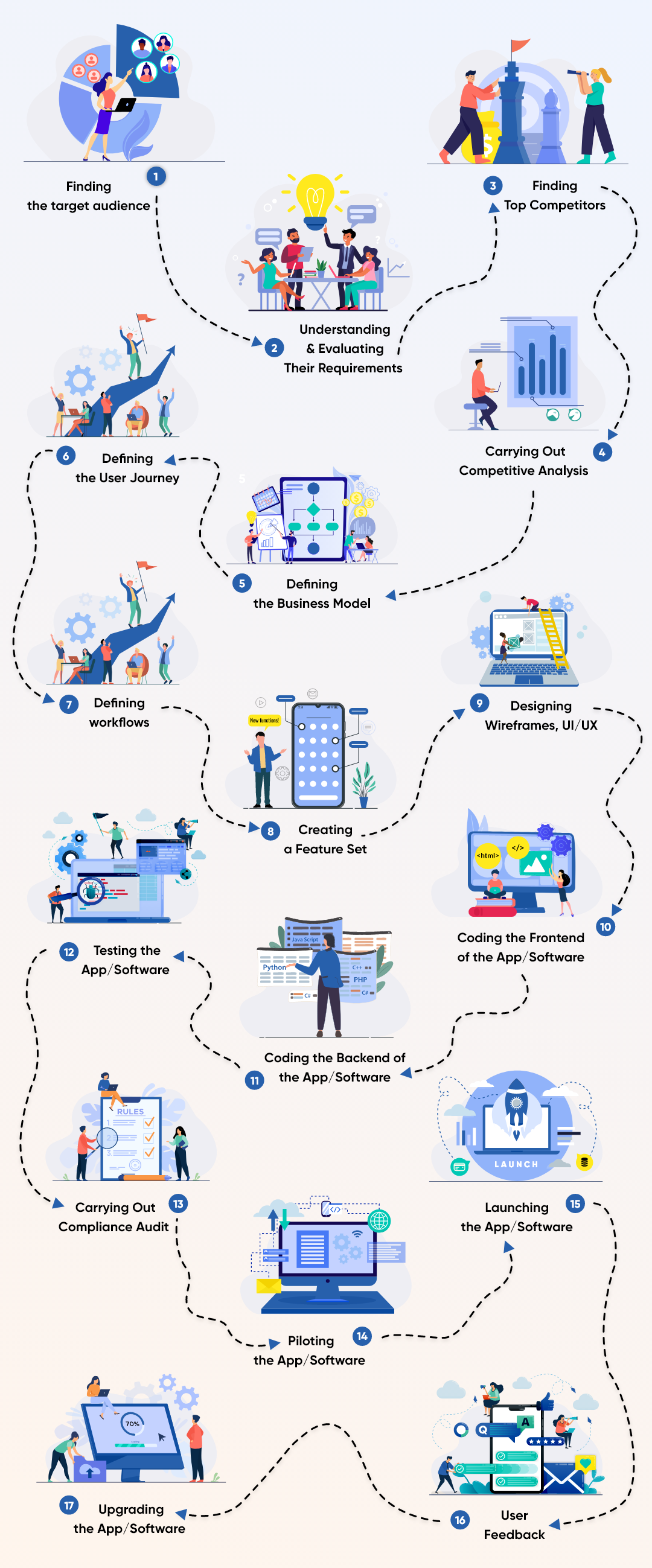A Guide to Diet & Nutrition App Development in 2023 [Top Ideas, Features, Cost]
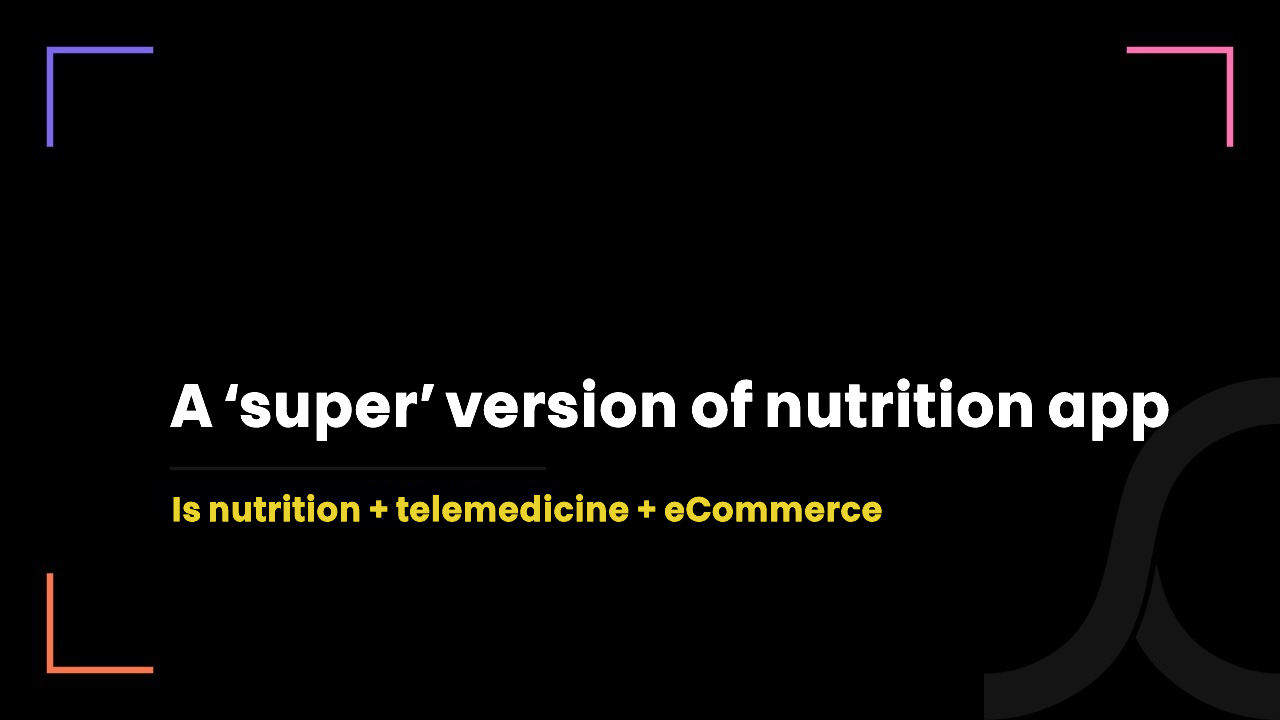
2 years ago
With the arrival of technology in healthcare, people are now using mobile apps, especially diet, nutrition, and fitness apps to maintain their healthy lifestyles.
Hence, the nutrition mHealth market has seen massive growth in the last few years.
And there are over 350,000 mHealth apps available in major app stores.
But only a few of them are getting praise from their users – and yes, revenue too.
Why? Because they are not built according to the user's unique needs.
However, with our combined experience of 250+ years (only in healthcare), we know what performs and what does not.
So, with our ultimate expertise in the same, we have created a complete – business, technical, and compliance guide to – diet and nutrition app development.
One-Minute Guide for Diet and Nutrition App Development
To build a nutrition app, you will need to follow these steps:
1. Define the target audience and the features, workflows, and functionality of the app.
2. Create wireframes and mockups to visualize the UI/UX of the app.
3. Design and build the app with a healthcare-specific team of UI/UX designers, developers, business analysts, compliance specialists, QA engineers, and other professionals.
4. Once it's done, perform various tests on your app to ensure that it is user-friendly, secure, and has no bugs and errors.
5. Now, launch and promote the app.
It is crucial to note that developing a nutrition app can be a tedious, complex, and time-consuming process.
Thus, it’s important to seek professional help or guidance from healthcare-specific business, technical, and compliance experts.
Now, let’s break down this quick guide into a more detailed one.
A Profitable Business Guide for Diet and Nutrition App Development
The most profitable business strategy is all about focusing on the user's needs.
And we have already identified it for you.
But before jumping right into that, first, let’s look at the scope of diet and nutrition app ideas.
- The market potential of diet and nutrition apps:
As per the reports, “U.S. Diet and nutrition apps market was valued at $3B in 2022 and is expected to reach $15B by 2029!”
And there are multiple reasons behind this booming market.
1. Growing popularity of fitness bands and smartwatches
2. The rising rate of chronic diseases such as diabetes
In essence, people are now more conscious about their healthy lifestyle.
Sensing the opportunity, governments across the globe are also supporting it.
Meaning, it’s the perfect time to invest in diet and nutrition app development.
- Now, define your target audience
This is the first step towards developing a user-focused nutrition app.
Once you define it, you’ll be able to identify what will work and what not.
Mostly, there are three audiences that most of the top-rated diet and nutrition apps are targeting.
1. Fitness centers
2. Nutritionists and dietitians
3. Individual users (from children to seniors)
- Once it's done, select the type of nutrition app you want to develop
There are various types of diet and nutrition apps you can develop.
However, it should be noted that each app comes up with different functionalities and targets different users.
Following is the complete list of its types:
1. Meal planning
2. Calorie measurement and tracker
3. Weight loss, maintain and gain app
4. Healthy food recipe
(A profitable tip: If you want to target a large user base and generate more revenue, build a multi-purpose nutrition app!)
- Now, it’s time to monetize your diet and nutrition app:
Your monetization strategy will define how much time it will take to obtain your investment in diet and nutrition app development.
Here is the most common approach for it.
1. Paid membership
2. In-app purchase and advertisement
3. Freemium model
4. Product sponsorship
5. eCommerce store
You must also read: Telemedicine for dietitians
A Powerful and Future-Ready Tech Approach to Building a Nutrition App
Now it's time to build your online presence.
For that, you have two options.
You can develop either a mobile or web app or both.
However, it should be noted that both have their pros and cons.
And to understand it better, here is the difference between them.
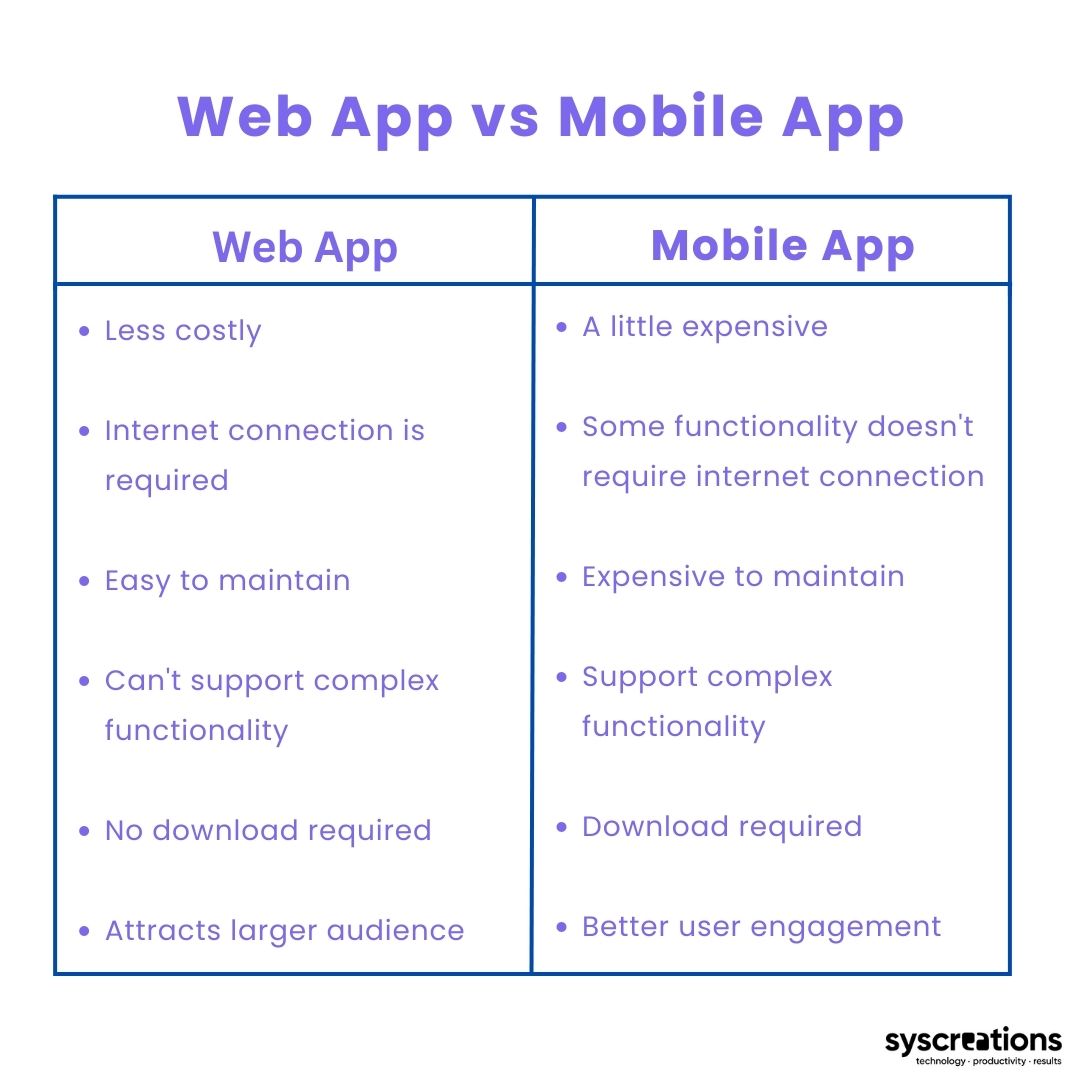
However, if you want to avoid all the roadblocks that a diet nutrition app possesses, you should hire healthcare-specific developers over non-healthcare developers.
Because tackling a mHealth app business, technical, and compliance challenges is a piece of cake for them.
For better understanding, the following is the detailed difference between them.
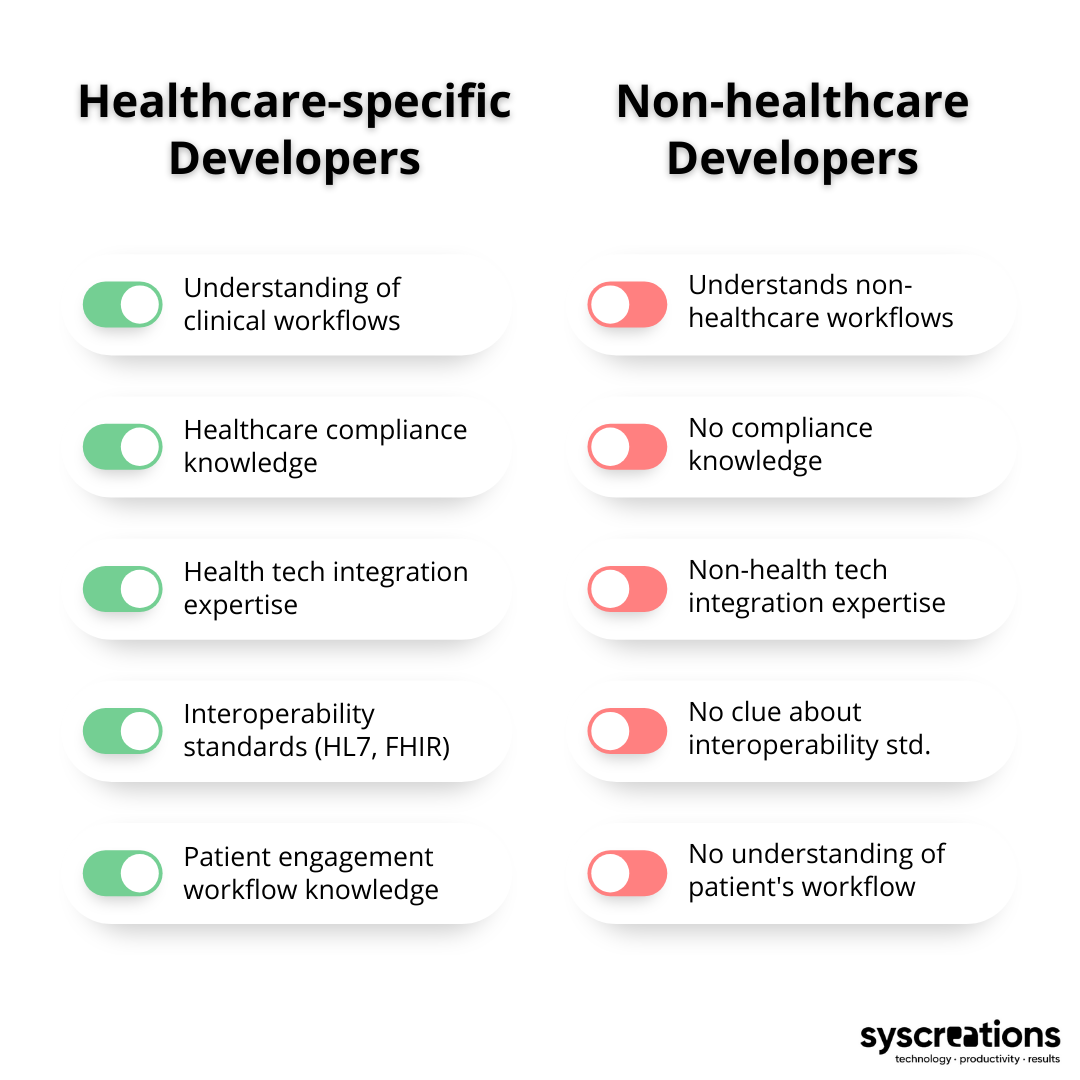
What is an Ideal Tech Stack to Develop a Nutrition App?
Many different technologies can be used in the development of a diet and nutrition app.
Following are some common technologies used in it:
1. Programming languages
You can use Java, Swift, or Python.
These languages are used to write the code that powers the app.
2. Database technologies
You can use SQL or NoSQL.
These are used to store and manage data within the app.
3. Mobile development frameworks
You can execute React Native or Flutter.
It provides a framework for building cross-platform mobile apps.
4. APIs (Application Programming Interfaces)
It is used to integrate the app with other healthcare systems.
5. Cloud computing platforms
You can use AWS or Google Cloud for it.
These platforms are used to host and manage your app.
6. Artificial Intelligence and Machine Learning
It helps you provide personalized recommendations or suggestions based on the user's health and fitness data.
7. Data analytics tools
You can use it to track and analyze your app user behavior and overall performance of the app.
8. Video conferencing and telecommunication technologies
If you want to offer telemedicine features within your diet and nutrition app, it’s important to use video conferencing and telecommunication technologies.
The most common ones are WebRTC and Twilio.
It lets developers integrate real-time video and audio communication into your nutrition app.
These are just a few examples of the tech stack that may be used in nutrition app development.
The final tech stack will depend on your specific features and functionality requirements.
You must also read: Technology Stack for Healthcare Apps
What are the Must-Have Features For Diet and Nutrition App Development?
The app allows users to count calories, control their eating habits, and receive daily suggestions for living a healthy lifestyle.
For that, you need features such as,
- A personal profile that includes details such as basic personal information, medical records, allergies, and food preferences
- Dashboard to manage the diet plan and track eating habits, nutrition, calories, and water intake.
- Users can set the diet plan and personal goals
- A calorie counter and meal data to analyze how your diet plan is going
- Push notifications as per their diet goal
- Blog section to share daily news, diet tips, and new research about nutrition to help users
- Food recipe and diet plan instruction from the certified nutritionist via pictures, video call, and recording
- Help and technical support
Now, it’s Time To Address Compliance Challenges (The Most Crucial Step!)
Your diet and nutrition app will store the health, financial, and personal data of your users.
And it’s your responsibility to protect those crucial data against cyber attacks.
To do so, your app needs to be compliant with the data privacy laws and regulations that are imposed by federal governments.
However, these laws vary by province and country.
For example,
- HIPAA applies in the USA
- PHIPA applies in Ontario
- PIPEDA applies in Canada
In case your app is not compliant with these laws there is always a high possibility of data breaches.
If it happens, you’ll be liable to hefty fines from the federal government.
To avoid such a mess, you should hire a compliance expert.
Because they have extensive experience in making any mHealth app compliant with data privacy and security laws.
You must also read: Hire HIPAA Consultant
How Much Does It Cost To Build A Diet and Nutrition App in 2023?
The truth is, there is no fixed number for it.
Because the cost of developing a nutrition app can vary depending on a number of factors such as,
- Features and functionality of the app
- Tech stack you want
- The complexity of the app
- Your workflow requirements
- Compliance challenges
In general, it can range from a few thousand dollars for a simple app to hundreds of thousands or even millions of dollars for a more complex app.
Thus, it is difficult to provide a fixed number without knowing more about your business, technical, and compliance requirements and goals for the app.
And without knowing your exact needs, we don’t want to give you any random numbers and mislead you.

Diet and Nutrition App Development Ideas To Generate 5X More Revenue With The Highest ROI
As we said before, there are not enough apps in the market that focus on the user's exact needs.
And you can take a big advantage of it with the following ideas.
1. Special feature for seniors
As we see, seniors need more calcium and vitamin-rich food to maintain their health condition especially, if they are suffering from chronic disease.
To help them correctly, you can offer AI-based features in which they just need to enter their medical condition.
The algorithm will analyze the health condition, and then it will provide the ideal diet plan that is most suitable for their medical condition.
2. Integration with wearable technology
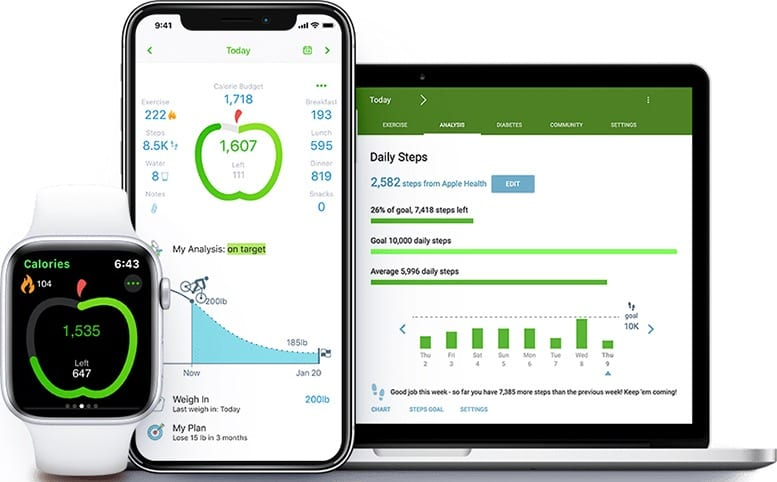
To provide a more personalized and outcome-driven nutrition plan, integration with wearable technology is a must.
It simply analyzes and synchronizes the users' real-time data of their physical activity and vital signs.
This enables the app to provide a more personalized nutrition and diet program.
3. Telemedicine feature
This is something that we can call ‘convenience in all sense’.
Because it lets users get instant solutions (at any time from anywhere) regarding their nutrition, food, recipes, and diet plan queries.
Not only this but it also helps nutritionists to analyze the progress of the user so that they can provide a more suitable nutrition plan for them.
4. eCommerce store in nutrition app
An eCommerce store not only helps you generate more revenue but also enables users to get the one-stop solution for their all diet and nutrition needs.
In which, you can sell or sponsor various nutritional products for your users.
It may include different supplements such as iron, dietary, mineral, vitamins, oral, and herbal.
5. Nutrition and supplement facts option
This adds an extra layer of convenience to your users.
Because it helps users to get the most ideal solution for their nutrition and supplement-related queries.
This may also encourage them to buy the product from your nutrition eCommerce app.
Our other useful guides:
Top 3 Diet and Nutrition Apps in Canada
Before developing any healthcare app, first, it’s essential to understand what existing apps are offering.
Because it helps you understand what will work and what not!
Following is the compiled list of the top diet and nutrition tracker apps in Canada.
1. MyFitnessPal
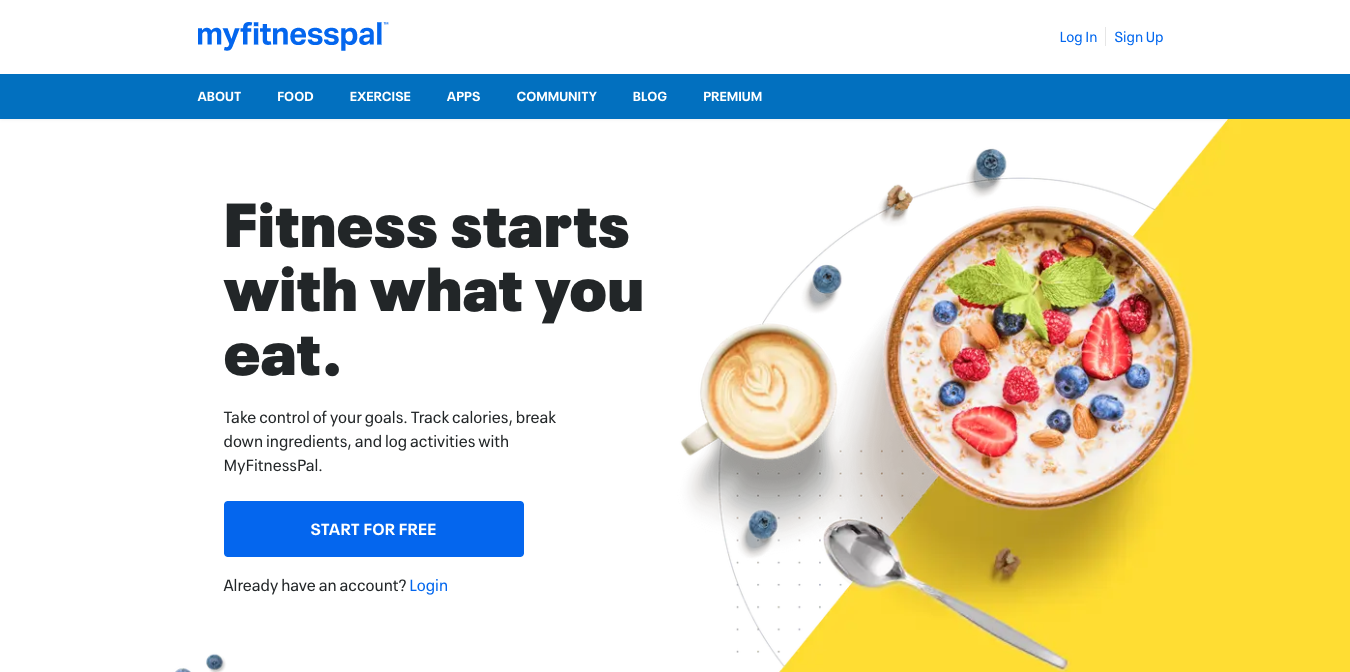
It is the most popular nutrition app in Canada which helps you track and control your calorie intake.
MyFitnessPal contains a large database from which you can learn almost everything related to nutrition and calorie intake.
Apart from that, it offers easy integration with over 50+ health apps to support a healthier lifestyle.
2. Lose It
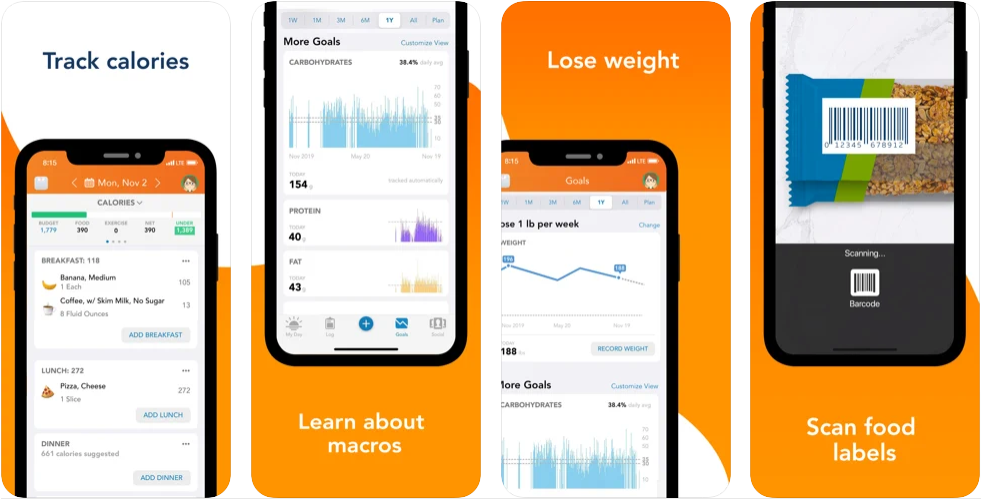
Lose It has a top-rated and straightforward weight loss plan that works as – set goals, track food, and lose weight.
Additionally, it offers water tracking, nutrition tracking, wearable device integration, progress reports, a barcode scanner, and a smart camera.
To deliver a more suitable nutrition and weight loss solution, Lose It provides certified nutritionists consultation.
3. Cronometer
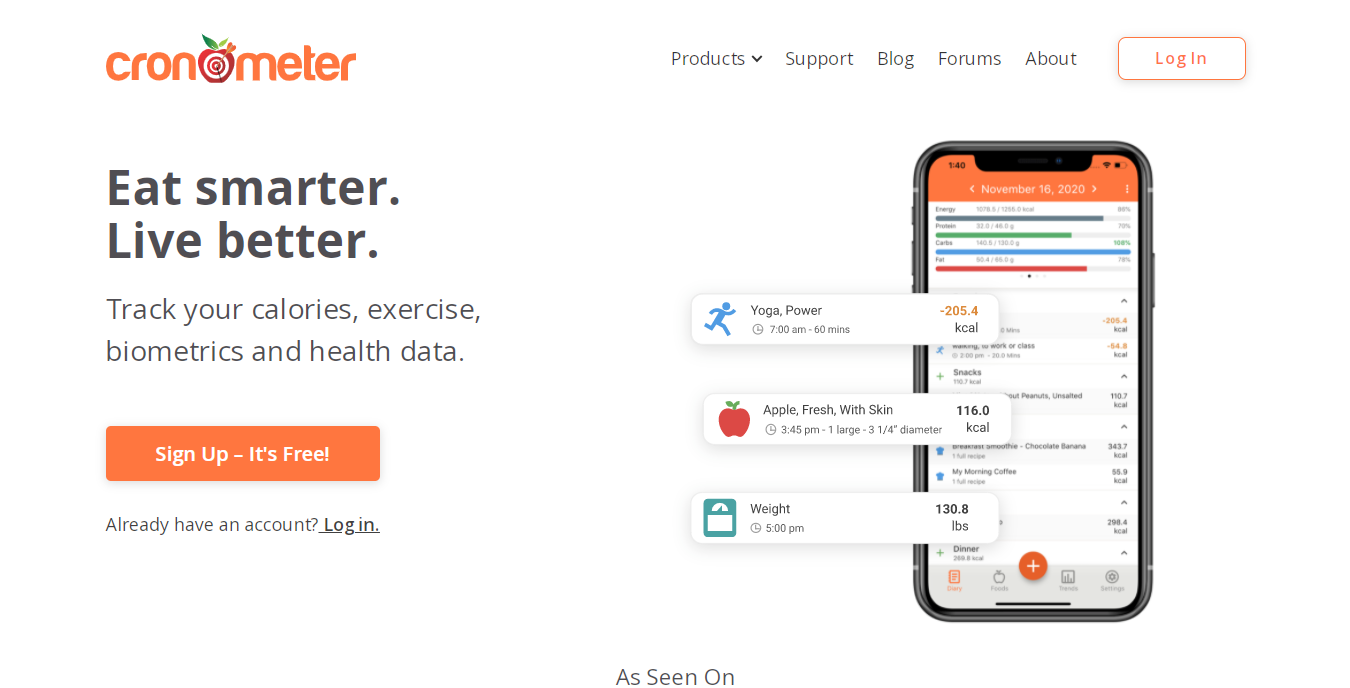
Cronometer simply allows users to track their diet plan, calories, exercise, and biometrics.
It provides adequate features such as a custom diet setting, log meals, insightful reports, diet support, and a track of 82 micronutrients.
You can sync the chronometer to other activity trackers such as Samsung Health, Google Fit, and Apple Health.
Want to Build Your Diet and Nutrition App Professionally? We have been Performing It For 8+ Years
We are an Ontario-based healthcare IT company.
With our healthcare-specific knowledge and expert team, we help healthcare start-ups, healthcare businesses, hospitals, clinics, and individual healthcare professionals achieve their business goals.
We have a dedicated and experienced team of UI/UX designers, web and app developers, QA engineers, compliance specialists, and business analysts.
When it comes to the development process, we use an outcome-driven approach.
In other words, we only do coding 20% of the time, because we know that successful app development is not about only doing the coding.
Of the rest 80%, we do market research, documentation, workflows, UI/UX design, QA testing, compliance audit, pilot, and launch.
In case you are wondering, here is our approach to developing digital healthcare products with our outcome-driven approach.
